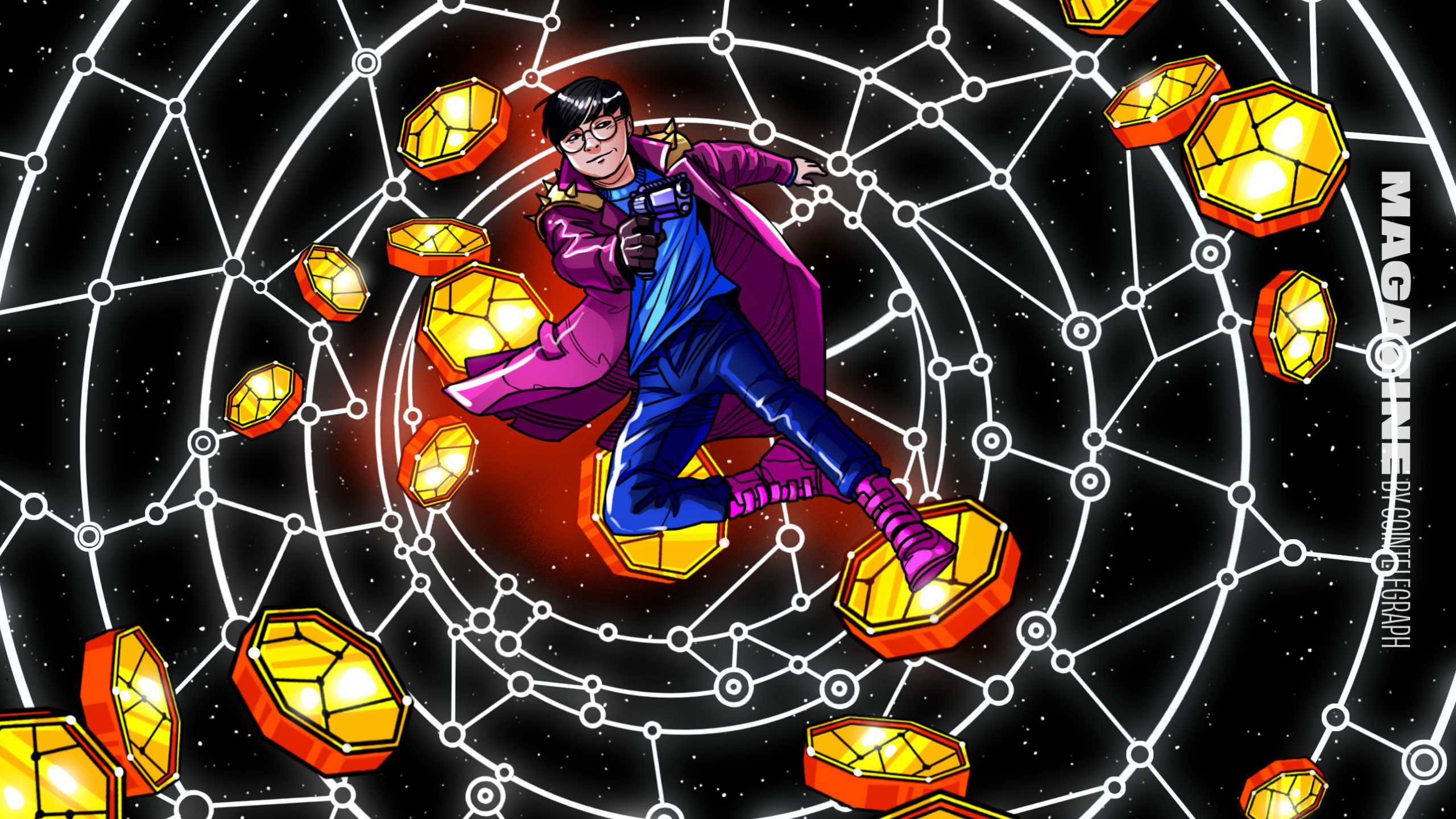
The Ethereum community has been in turmoil over the past few weeks, with members raising the alarm that the chain will lose its competitive edge if it doesn’t address some core design issues.
A key focus of the outrage has been layer-2 fragmentation. In recent years, Ethereum has embraced a layer-2 scaling roadmap—a plan that encouraged the development of third-party auxiliary networks called “layer-2 rollups”—to help scale the base Ethereum ecosystem. Offloading activity to these upstart networks has helped bring down fees and improve speeds for end-users, but it has led to a massive, deeply fragmented ecosystem of layer 2s.
While layer-2 networks all post data back down to Ethereum, they often struggle to communicate directly with one another, meaning passing assets and data between them can become expensive and cumbersome. There’s also the risk of centralized sequencers: reliance on company-controlled black boxes to pass transaction data between blockchain layers.
As layer-2 chains continue to proliferate, some Ethereum developers are pushing rollup tech that takes a new approach to security and interoperability: “based rollups.”
Based rollups
Based rollups differ from most existing rollups because they shift execution duties—such as processing transactions—back to Ethereum’s layer-1 rather than handling them on a separate layer-2 network.
When someone transacts on a layer-2 rollup, their transaction is processed through a component called a “sequencer.” The sequencer batches multiple transactions and submits them to Ethereum for settlement. In most rollups today, this sequencer is centralized, meaning a single entity (usually the company that built the rollup) controls the ordering and posting of transactions.
Centralized sequencers are currently a topic of debate in the Ethereum community. While sequencers provide efficiency and generate revenue for rollup operators by strategically ordering transactions, they also introduce a single point of failure. A malfunctioning or malicious sequencer can delay or manipulate transactions, raising concerns about censorship and reliability.
Based rollups avoid this vulnerability by using Ethereum’s built-in sequencing—its massive community of validators—rather than a single centralized sequencer.
The layer-2 roadmap evolution
In 2022, Ethereum co-founder Vitalik Buterin laid out his vision for a rollup-centric roadmap. The plan proposed using layer-2 rollups to side-step the base chain’s high fees and slow transaction speeds.
Different rollups employ different strategies for keeping down costs and boosting speeds, but they are all designed to uphold decentralization and security—meaning (in theory) the networks shouldn’t be centrally run, and the transactions they shepherd to Ethereum are free from tampering.
Rollups like Optimism, Arbitrum, Base, zkSync, and Blast have quickly grown to support larger transaction volumes than Ethereum itself. According to L2Beat, there are currently 140 live layer-2 networks, but the experience of operating between them—passing assets and other data between networks—has become clunky. As Ethereum becomes bigger and layer-2 networks become more integral to its functioning, improving communication between layer-2s—in other words, improving “composability”—has become more important than ever.
Because based rollups share the sequencer from the layer-1 chain (sometimes referred to as the layer-1 “proposer”), they can call on smart contracts on other based rollups within seconds, making it easier to access and exchange data across layer-2s.
“They effectively share a sequencer with each other and also with the layer-1 and that allows the sequencer now to coordinate messages passing between different based rollups, whereas normally message passing happens in an asynchronous fashion,” said Ben Fisch, the CEO of Espresso Systems, in an interview with CoinDesk.
Since based rollups all use Ethereum’s built-in sequencing, they can interact with one another instantly, in blockchain terms—all within the same Ethereum block.1
“You could have, in the span of one Ethereum block, a based rollup withdraw assets, do something in the layer-1, deposit the assets back, do something in the layer-2 and withdraw assets again,” Fisch told CoinDesk.
Some drawbacks
A few projects are looking to use based technology, but only one based rollup, Taiko, is currently live.
While rollups like Taiko present clear benefits, they will need to overcome some technical hurdles before they can be more widely adopted.
One major challenge is proof generation. When a based rollup submits transaction data to Ethereum, it must generate and publish proofs every 12 seconds—matching Ethereum’s block time. Currently, layer-2 rollups use two types of proof systems: zero-knowledge (ZK) proofs, which finalize in minutes, and optimistic proofs, which take up to seven days to suss out potential fraud.
For based rollups to function efficiently, proof generation speeds would need to align with Ethereum’s block time—a significant technical leap. However, Fisch says a breakthrough on this front could be “imminent. “
The other pitfall is Ethereum’s block producers, or “layer-1 proposers.” In based rollups, these proposers take over the role of sequencing transactions. But their primary motivation isn’t necessarily fairness—it’s profit
“Layer-1 proposers are not trusted entities that are working in the interest of the layer-2, they are economically motivated to make as much money as they can,” Fisch said. “So they may confirm some transactions for end users, and then see an MEV opportunity, which causes them to publish something totally different.”
MEV, or maximal extractable value, refers to the practice of reordering transactions to maximize profit, often at the expense of regular users. If proposers manipulate transactions, it could create instability in based rollups. To address this, developers are working on solutions like based pre-confirmations, which aim to add economic incentives for proposers to act in the interest of rollups.
So while based rollups may present a promising way to reduce fragmentation between layer-2s, they’re not a miracle fix. “My personal opinion is that based rollups are one part of the solution, they are not the only solution, and not all layer-2s necessarily should or will be based,” Fisch said.
Read more: ‘Sequencers’ Are Blockchain’s Air Traffic Control. Here’s Why They’re Misunderstood
Read More: www.coindesk.com









 Bitcoin
Bitcoin  Ethereum
Ethereum  Tether
Tether  XRP
XRP  Solana
Solana  USDC
USDC  Dogecoin
Dogecoin  Cardano
Cardano  TRON
TRON  Lido Staked Ether
Lido Staked Ether  Wrapped Bitcoin
Wrapped Bitcoin  Sui
Sui  Chainlink
Chainlink  Wrapped stETH
Wrapped stETH  Avalanche
Avalanche  Stellar
Stellar  Shiba Inu
Shiba Inu  Hedera
Hedera  Hyperliquid
Hyperliquid  LEO Token
LEO Token  Toncoin
Toncoin  Bitcoin Cash
Bitcoin Cash  Litecoin
Litecoin  Polkadot
Polkadot  USDS
USDS  WETH
WETH  Monero
Monero  Pi Network
Pi Network  Wrapped eETH
Wrapped eETH  Pepe
Pepe  Bitget Token
Bitget Token  Binance Bridged USDT (BNB Smart Chain)
Binance Bridged USDT (BNB Smart Chain)  Ethena USDe
Ethena USDe  Coinbase Wrapped BTC
Coinbase Wrapped BTC  WhiteBIT Coin
WhiteBIT Coin  Uniswap
Uniswap  Bittensor
Bittensor  Dai
Dai  NEAR Protocol
NEAR Protocol  Aptos
Aptos  Aave
Aave  OKB
OKB  Ondo
Ondo  Jito Staked SOL
Jito Staked SOL  Ethereum Classic
Ethereum Classic  Internet Computer
Internet Computer  Tokenize Xchange
Tokenize Xchange  Cronos
Cronos